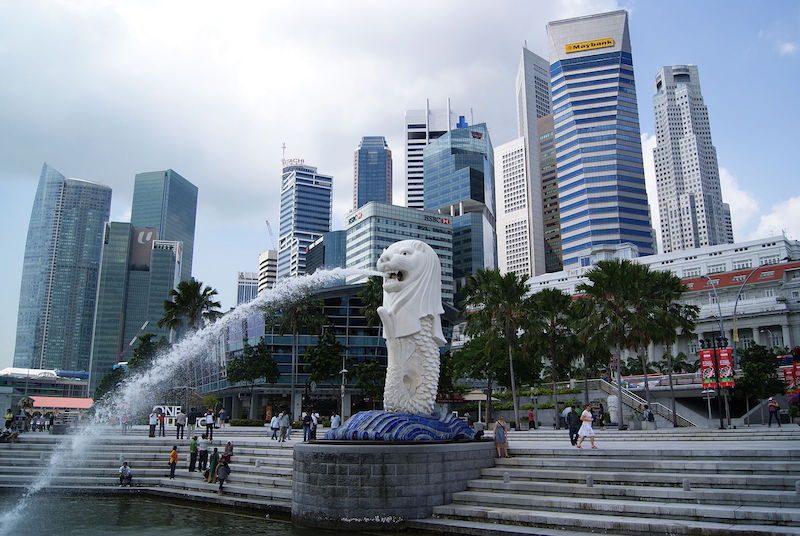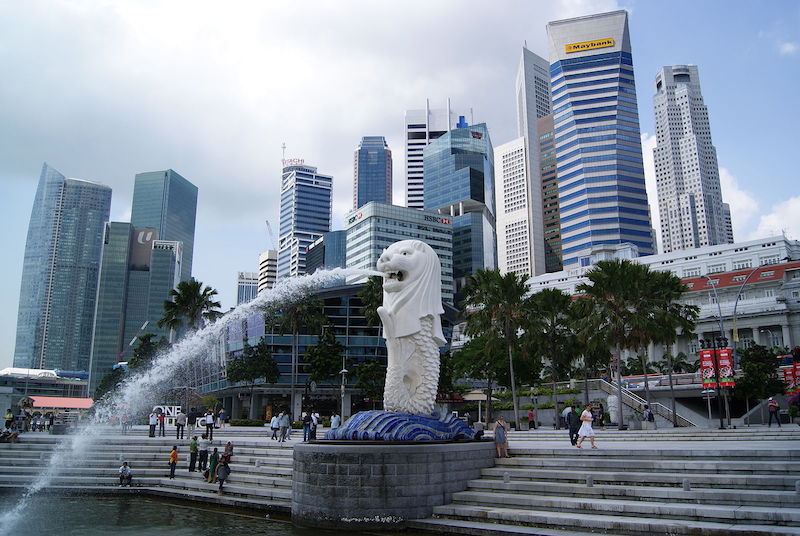Singapore is regularly lauded as a squeaky-clean island in a region awash with corruption.
The city-state ranked eighth in the world in Transparency International’s 2015 Corruption Perception index, in comparison to 150th-ranked Cambodia.

But their reputations have not stopped the Cambodian government from suggesting that Singapore turned a blind eye to sand smugglers—charges that the Singaporean government has yet to answer since they were leveled last month.
“They need to respond to the accusations by Cambodia’s Ministry of Mines and Energy that Singapore has been, for years, importing massive amounts of illegally sourced sand and falsely reporting them as having come from Cambodia,” said Alex Gonzalez-Davidson, the director of environmental group Mother Nature.
The Singaporean Embassy in Phnom Penh has not responded to repeated requests for comment.
A spokeswoman for Singapore’s Building and Construction Authority (BCA), which regulates Singapore’s sand imports, promised a response, but has not provided one since she was first contacted over three weeks ago.
Singapore recorded importing more than 73.6 million tons of sand from Cambodia between 2007 and last year, compared to less than 2.8 million tons Cambodia said it sent there, according to figures both countries sent to the U.N. Commodity Trade Statistics Database (Comtrade).
The discrepancy is notable given the many adverse effects attributed to sand dredging, which has been blamed for ravaging river and coastal ecosystems and destroying the livelihoods of fishermen. Prices for sand have skyrocketed due to bursting global demand for reclamation and construction projects, fueling the rise of Indian sand mafias involved in the smuggling of the commodity as well as the disappearance of 24 small islands in Indonesia, according to a 2014 report from the U.N. Environment Program.
The Cambodian government has offered a number of theories to explain the discrepancy: the unreliability of global trade data, different record keeping techniques and undefined “inefficient practices.”
In an interview last month, Ministry of Mines and Energy spokesman Meng Saktheara offered another explanation: the difference in records might be caused by “smuggling from other countries that could include Cambodia to Singapore,” he told Radio France Internationale.
Smugglers could be flying under the Cambodian flag to get around sand export bans in Vietnam, Malaysia and Indonesia, Mr. Saktheara said, by extension suggesting that Singapore had been accepting tens of millions of tons of illicit sand.
In a 2010 statement, Singapore’s Ministry of National Development defended its import practices, saying that “our customs have in place procedures to check and investigate the import of goods at the checkpoints” and that “sand supplies must have the necessary import permits.”
The country has used sand to extend the island’s territory by 20 percent, or 130 square km, over the past 40 years, according to the U.N. report. The government plans to add another 56 square km by 2030, according to The Straits Times newspaper.




